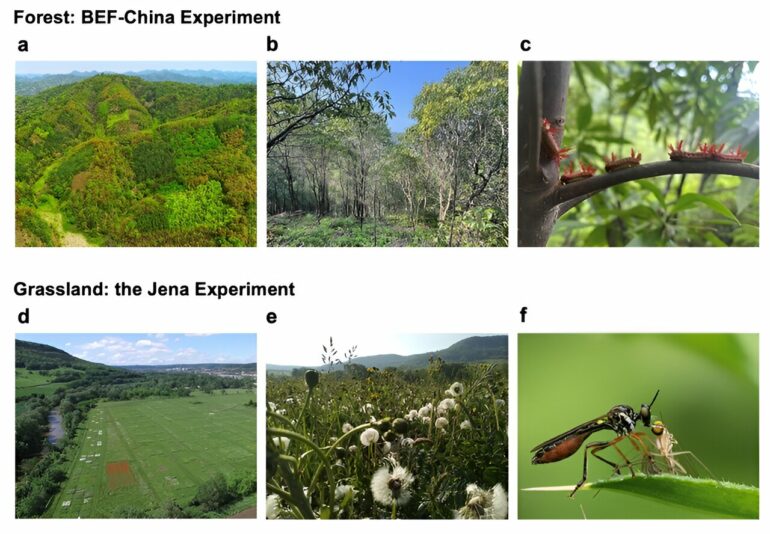A study led by Prof. Liu Xiaojuan from the Institute of Botany of the Chinese Academy of Sciences (IBCAS) has demonstrated that the association between multitrophic diversity and ecosystem multifunctionality is stronger than the relationship between the diversity of individual trophic groups and multifunctionality.
This research underscores the critical role of diverse biological interactions across different trophic levels in maintaining ecosystem health.
The study, published on August 29, 2024, in Nature Ecology & Evolution, reveals that plant diversity enhances ecosystem multifunctionality by promoting multitrophic diversity—diversity that spans multiple levels of the food web, from plants to herbivores, predators, and decomposers.
“Therefore, conservation efforts aimed at promoting ecosystem multifunctionality must consider not only plant diversity but also the diversity of higher trophic levels,” said Prof. Xiaojuan, one of the corresponding authors of the study from IBCAS.
“This is because multitrophic interactions have a more profound impact on ecosystem functions than the diversity within any single trophic group, such as plants.”
Using data from two large-scale biodiversity experiments—BEF-China, representing subtropical forests, and the Jena Experiment, representing temperate grasslands—the researchers were able to expand on previous findings regarding the relationship between plant diversity and ecosystem functions. Their results confirm that the influence of plant diversity on multifunctionality is mediated by its positive effect on multitrophic diversity.
This research provides the first experimental evidence linking plant diversity to ecosystem multifunctionality through multitrophic diversity across different ecosystems, according to Prof. Xiaojuan, also the management group leader of the BEF-China platform.
Moreover, the study demonstrates that the relationship between multitrophic diversity and ecosystem multifunctionality is stronger in forests than in grasslands. This can be attributed to the greater structural complexity and longer life cycles of trees, which support more intricate trophic interactions.
These findings showed the need to protect not only plant diversity but also higher trophic levels, such as arthropods and soil nematodes, which play crucial roles in ecosystem functioning, said Prof. MA Keping, Chair of the BEF-China platform.
According to Prof. Nico Eisenhauer, spokesperson for the Jena Experiment, the combination of results from such distinct ecosystem types in different biomes is extremely novel and valuable to describe the general relevance of biodiversity.
“Comprehensive long-term data on above- and belowground food webs are key to understanding the ecosystem consequences of biodiversity loss,” he said.
Ecosystems can sustain many important functions, but only when diversity is high. Thus, it is important to preserve and manage all ecosystems to the benefit of species and mankind.
More information:
Yi Li et al, Plant diversity enhances ecosystem multifunctionality via multitrophic diversity, Nature Ecology & Evolution (2024). DOI: 10.1038/s41559-024-02517-2
Provided by
Chinese Academy of Sciences
Citation:
Experimental evidence links plant diversity to ecosystem multifunctionality through multitrophic diversity (2024, September 13)



